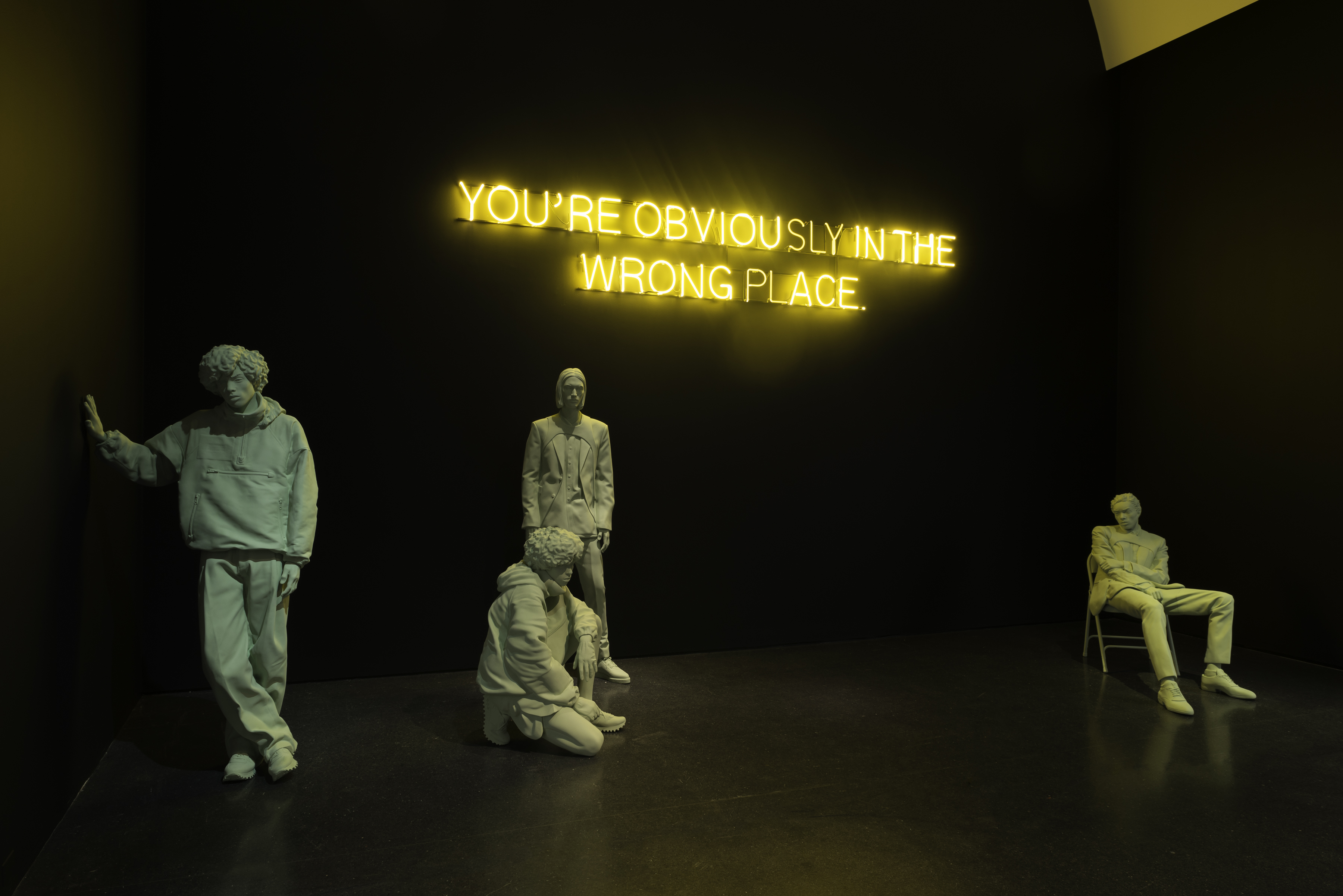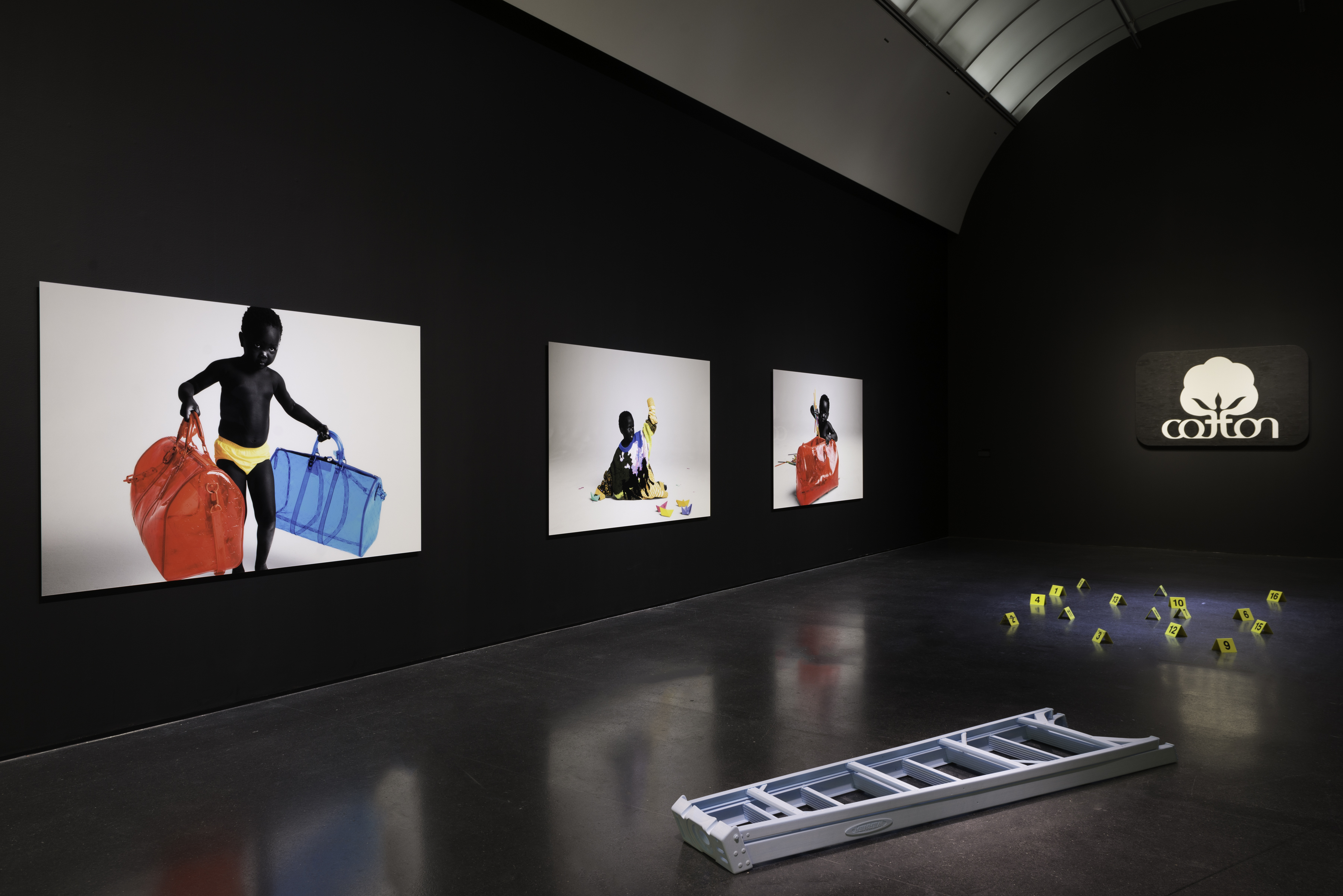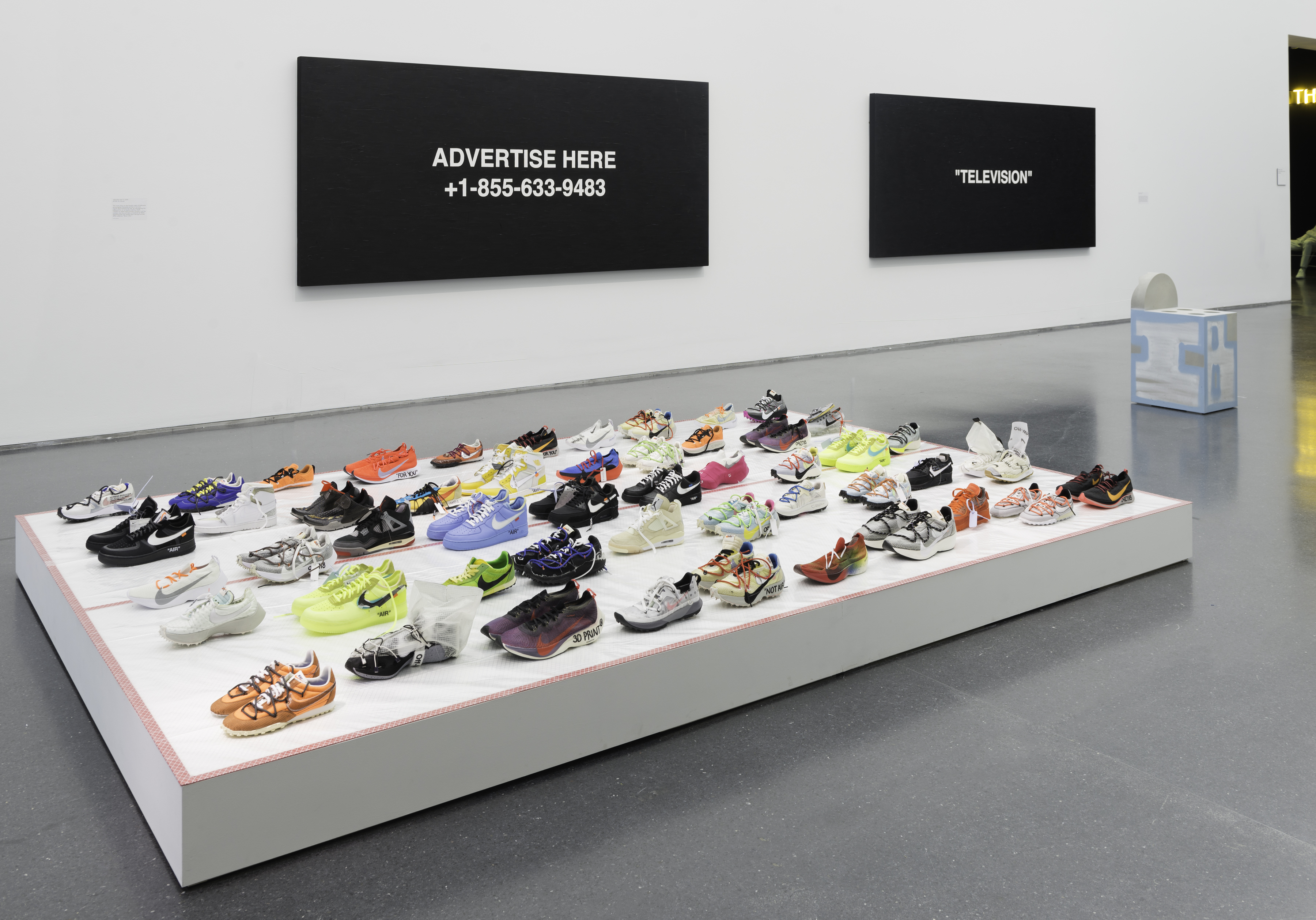An Overview of Virgil Abloh’s Work That Extends Far Beyond Fashion

 Virgil Abloh’s genre-crossing design practice takes center stage at the MCA Chicago in a multidisciplinary show that presents him as a designer and artist. The first solo exhibition and major retrospective for the designer, “Figures of Speech” reveal the various stages of Abloh’s creative process. Curated by Michael Darling, MCA’s chief curator, this 9-part exhibition explores Abloh’s influences, contextualizes his fashion designs, presents his art, design, and DJ-practice, and investigates the black gaze; it charts the political foundation for Abloh’s practice and effectively frames him as a cultural agent, and artist.
Virgil Abloh’s genre-crossing design practice takes center stage at the MCA Chicago in a multidisciplinary show that presents him as a designer and artist. The first solo exhibition and major retrospective for the designer, “Figures of Speech” reveal the various stages of Abloh’s creative process. Curated by Michael Darling, MCA’s chief curator, this 9-part exhibition explores Abloh’s influences, contextualizes his fashion designs, presents his art, design, and DJ-practice, and investigates the black gaze; it charts the political foundation for Abloh’s practice and effectively frames him as a cultural agent, and artist.Black Gaze: Abloh Carves the Way for Black Representation in the Right Place
Throughout “Figures of Speech,” race is a central theme; by using black color for the otherwise white museum walls, the curator, Michael Darling, prominently incorporates blackness. In the section “Black Gaze,” mannequins stand against a backdrop reading: “You’re Obviously In The Wrong Place.” The line is borrowed from the cult film “Pretty Woman” (1990) starring Julia Roberts as an empowered sex worker that falls in love with a client.
In this rendition of the quote, Abloh juxtaposes blackness with empowerment. On a far wall, a cotton logo is printed as a reference to the common material used in fashion, but also the racial past of American slavery.
 Previous: Installation view, Virgil Abloh: “Figures of Speech”, MCA Chicago. Photographed by Nathan Keay and courtesy of MCA Chicago. Above: Off-White™ c/o Virgil Abloh, Summer/Spring 2014; Courtesy of Off-White™ c/o Virgil Abloh. Photographed by Enrico Ranzato.
Previous: Installation view, Virgil Abloh: “Figures of Speech”, MCA Chicago. Photographed by Nathan Keay and courtesy of MCA Chicago. Above: Off-White™ c/o Virgil Abloh, Summer/Spring 2014; Courtesy of Off-White™ c/o Virgil Abloh. Photographed by Enrico Ranzato.
In 2012, Abloh challenged the fashion industry with the launch of his streetwear label Off-White, with a decidedly high-fashion edge, in Milan. To reach beyond the fashion elite, a mainly white privileged audience, his marketing strategy featured black faces across social media channels. As many of them were influencers, from the realm of sports to art, the campaign became a platform that reinforced their presence and contributions to society.
Abloh‘s quick rise in the fashion industry called attention to the long-time exclusion of blacks in the upper echelons of the fashion world. The campaign itself forced traditional white spaces to grapple with race, a subject that is often strayed away from the consumer market of fashion.
 Installation view, Virgil Abloh: “Figures of Speech”, MCA Chicago. Photographed by Nathan Keay courtesy of MCA Chicago.
Installation view, Virgil Abloh: “Figures of Speech”, MCA Chicago. Photographed by Nathan Keay courtesy of MCA Chicago.
A photograph of a young black boy in a Louis Vuitton sweater brings the section together. Similarly, to Roberts’ character who manages to legitimize her presence on Rodeo Drive, Abloh further increased black representation in the world of fashion as he became artistic director of Louis Vuitton in 2018. Thereby adopting a title that no black faces have held before.
The museum environment connects the dots creating a big-picture for visitors that might be hard to grasp for consumers. “Black Gaze” directly confronts the racial progress in the fashion industry by investigating Abloh‘s contribution to black representation through his designs, but also through elements that are not integrated into his fashion shows: photographs, words, and signage.
Streetwear & Fashion: Homage and Subculture
While many think streetwear is a literal translation of having to do with the streets it was actually inspired by surf culture. Stussy, a brand from Southern California founded 33 years ago, has been coined the creator of streetwear. The company aimed to make t-shirts feel high end for the diverse neighborhoods they catered to. Thus the two most important aspects and foundations of streetwear are t-shirts and uncommonness. Catering to skateboarders and hip-hoppers, SUPREME and Neighborhood, both established in 1994, mothered the trend that is now mainstream to incorporate basic items like hoodies, t-shirts, and sneakers into their lines. Remixing and borrowing typography, branding, and imaging, popular in streetwear, has defined Abloh’s craft as a designer.
The exhibition presents streetwear as an art movement rather than a niche subculture marked by cultural progression and a platform for visibility.
Abloh’s first serious venture into fashion was through the brand Pyrex Vision. Pyrex used unique screen-printing imaging to alter basic wholesale templates. This first dip into fashion eventually led Abloh to helm his own label, Off-White. The brand’s name speaks to societal judgments on race, and places the brand into a gray area, neither black nor white.
Leveraging what he learned during his MA studies in architecture at Illinois Institute of Technology and a keen understanding of fabrics Abloh plays with space often using buildings as inspiration for his designs. The influence of buildings seamlessly connects with the urban communities that inspire his pattern and fabric choices.
In 2008 Abloh designed a cotton t-shirt for the now-defunct Paris retailer Colette. By integrating garnished necklaces he brings hip-hop culture to high-end fashion. Another design look, #12 in the Off-White ℅ Virgil Abloh™ Women’s Collection S/S 2017 pairs a double-breasted suit dress with a t-shirt. Through these designs, he questions fashion protocol by re-appropriating and juxtaposing streetwear, casual, and office-wear.
Design: Collaborative Engineering
To the delight of sneakerheads, a wall is dedicated to the display of Abloh’s unrealized sneaker models designed for Nike. To contextualize the shoes, acrylic on canvas works “ADVERTISE HERE” and “TELEVISION” flank the wall. I wonder why these shoes were not produced, were they not commercially viable? Or, are unrealized projects just a natural part of all design processes? This integration of prototypes uncovers a rewarding story of the design process not (yet?) present in showrooms but commonplace in the museum space.
 Installation view, Virgil Abloh: “Figures of Speech”, MCA Chicago. Photographed by Nathan Keay courtesy of MCA Chicago.
Installation view, Virgil Abloh: “Figures of Speech”, MCA Chicago. Photographed by Nathan Keay courtesy of MCA Chicago.
Slogans, like those paired with the sneakers or incorporated in the IKEA rug design, are a common theme throughout the exhibition. Slogans in the general understanding are short, yet memorable, and have become synonymous with advertising. What is Abloh advertising through Figures of Speech? Throughout the exhibition, he calls attention to concepts that we often overlook: blackness, diversity, streetwear, music, and design process. These aspects serve as a reference to his design philosophy. Abloh’s design process consists of achieving mastery through prototyping, deconstructing, and repeating.
 IKEA x Virgil Abloh. Photo courtesy of IKEA.
IKEA x Virgil Abloh. Photo courtesy of IKEA.
Somewhat of a renaissance man, Abloh’s practice extends beyond fashion. He has designed furniture and rugs both high-end, for Carpenters Workshop and popular, for IKEA. He is also a DJ.
What Happens When Fashion Enters the Institution?
You Might Also Like
What's Your Reaction?
Writer, Cultbytes Art professional with Chicago-based art non-profit Project&. Moreira-Brown studied Art History at The Ohio State University receiving a B.A in History of Art with an emphasis on Post-Modern and African-American art history. Previously, she has held positions in gallery administration at Fredrich Petzel Gallery, 67 Gallery, Joseph editions and has worked at Kim Heirston Art Advisory and The Wexner Center for The Arts. She is interested in the postmodern race relations and narrative change. l igram l contact l


